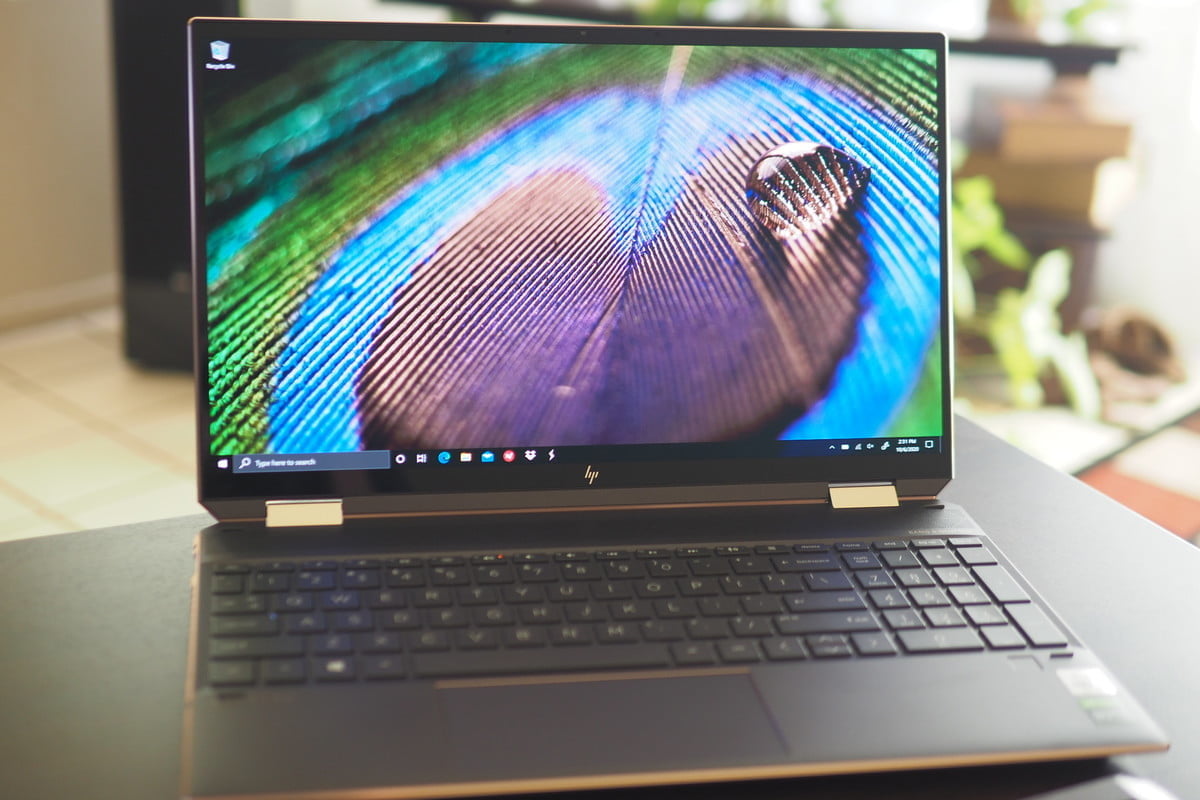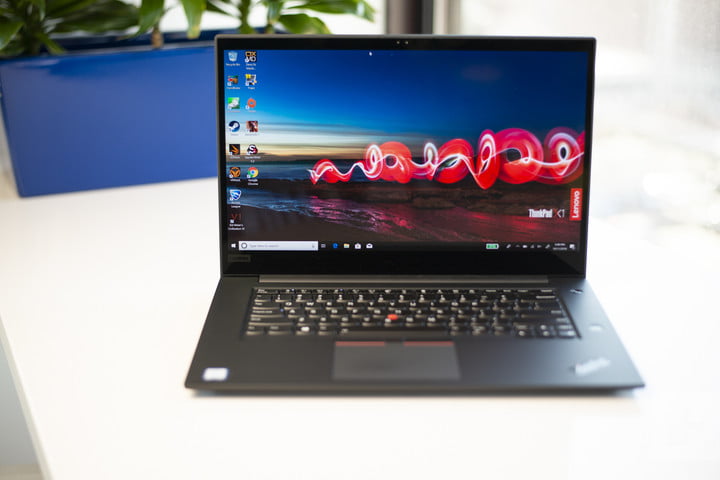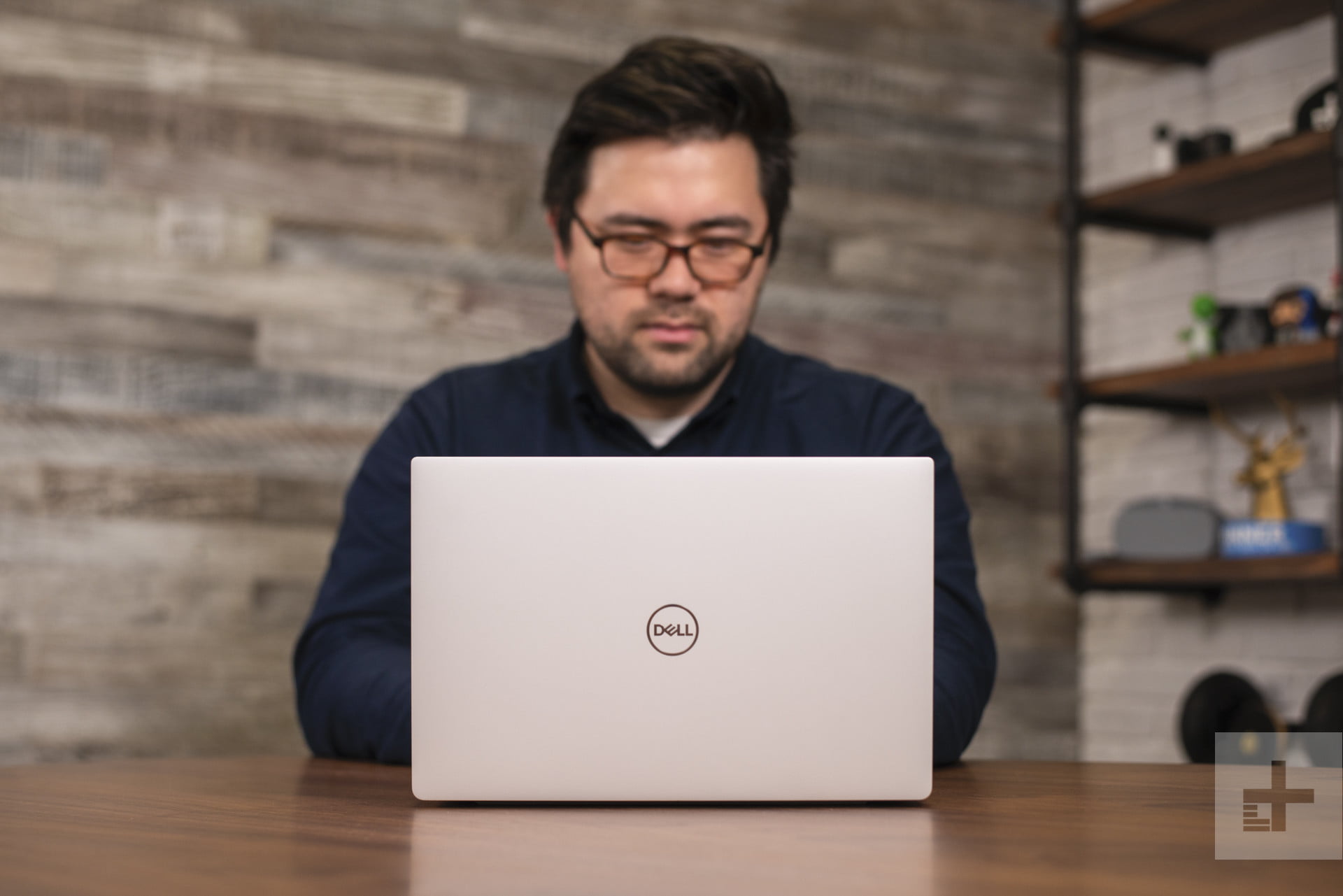A few years ago, a 4K laptop was unheard of. But today, top manufacturers like Dell, HP, and Lenovo offer a 4K display option across their flagship devices. These upgrades carry a hefty premium, though, so knowing what the best 4K laptops are is important.
To help you get the best bang for your buck, we created a list of our top picks. Our favorite 4K laptops, like the Dell XPS 13, come with breathtaking displays without sacrificing battery life and performance.
Best 4K laptops at a glance
Dell XPS 13 (2021)
Why you should buy this: The XPS 13 is a killer laptop in every way and looks fantastic with a 4K panel.
Who’s it for: Anyone but gamers.
What we thought of the Dell XPS 13:
The XPS 13 is at the top of our list of the best laptops, so it’s perhaps no surprise that the 4K version tops the list of our favorite 4K laptops, too. The latest versions go beyond anything we’ve seen before, moving the webcam back up top where it belongs, trimming the bezels and chassis even more, and offering some of the best internal hardware you can get in a 13-inch size (although there are some other great 13-inch laptops worth considering).
In our review, we took a look at the 4K UHD model with an Intel 11th-generation six-core Core i7-1185G7 processor, 16GB of RAM, and a terabyte of PCIe NVMe SSD storage. Whichever option you pick, the 4K touchscreen looks fantastic, even in bright offices and outdoors, thanks to 500 nits of brightness. It has great contrast, support for a wide range of colors (although not as wide as some others on our list), and better color accuracy than most laptops in its bracket.
The only caveat to all this is that the 4K screen does demand more from the battery, so you do need to sacrifice a little of the XPS 13 (2021)’s longevity to upgrade it to 4K. Also, while the integrated Iris Xe graphics are a big upgrade over previous generations and do allow entry-level gaming, there’s no replacement for a dedicated graphics chip.
Read our full Dell XPS 13 review
Dell XPS 15
Why you should buy this: It’s the XPS 13 but bigger, with more room to enjoy that beautiful 4K screen.
Who’s it for: Anyone who wants more than a 13-inch laptop can deliver.
What we thought of the Dell XPS 15:
Larger and more capable, but a little less portable than its smaller sibling, the XPS 15 steals the top spot of our best 15-inch laptops list — and the 4K configuration is one of our favorites. You get a cheaper price and better battery life with the 1080p option, but if you’re after that 4K experience, the XPS 15 is one of the best. And the laptop uses the taller 16:10 aspect ratio that’s great for productivity.
The latest version no longer suffers from poor webcam placement in the base of the display bezels, which is a welcome change. It has solid performance, thanks to powerful Intel 11th-gen Core i7 and i9 CPUs, up to 32GB of memory, and an Nvidia RTX 3050 Ti graphics chip for decent entry-level gaming capabilities and strong creative application performance. The optional OLED 3.5K screen means you’re getting one of the best displays on the market in terms of inky-black contrast, wide and accurate colors, and incredible brightness, even if it isn’t technically 4K.
It is one of the better XPS laptop refreshes, and this Dell XPS 15 model is fantastic to look at and use. It’s simply one of our favorite 4K laptops.
Read our full Dell XPS 15 review
Dell XPS 17
Why you should buy this: You need a big, beautiful, and powerful laptop as your daily driver.
Who’s it for: Content creators and prosumers
What we thought of the Dell XPS 17:
A 17-inch laptop might seem crazy in 2020, but the Dell XPS 17 proves that large laptops can be comfortable to use and incredibly valuable to own. Dell has made some stunning displays in their XPS series over the past few years, and the XPS 17 is no different. With such a large, vivid, and bright display, this is the perfect setup for any professional video editor. Combine that with its impressive performance, and you have a device that handily defeats its closest competitor — the MacBook Pro 16 — by leaps and bounds.
The battery life is a little rough, but that’s to be expected since it has to power such a large display. One of the other great things about the XPS 17 is how impossibly thin and light it is. The thin bezels mean Dell can pack more screen in less space, and it continues the minimal design language of the XPS 13 and 15 before it.
Read our full Dell XPS 17 review
HP Spectre x360 15 (2020)

Why you should buy this: It’s an awesomely powerful 2-in-1 with great visuals in both laptop and tablet mode.
Who’s it for: Those who want the best 4K screen clarity in a convertible laptop.
What we thought of the HP Spectre x360 15 (2020):
Laptops that can convert into tablets (2-in-1s, as they’re often called) typically miss out on being great laptops by virtue of trying to be a jack of all trades. Not so with the HP Spectre x360 15, which packs seriously powerful hardware into a relatively lightweight chassis for an awesome notebook with some tablet capabilities, too.
The laptop offers a base model with a 10th-gen Intel i7-10750H process with GeForce GTX 1650 Ti GPU, 16GB of RAM, and 512GB of PCIe NVMe storage. Connections include Thunderbolt 3, SuperSpeed USB-C, DisplayPort 1.2, and HDM 2.0b. Wi-Fi 6 compatibility is also included.
The display itself looks gorgeous, and though it falls behind some of the competition in terms of contrast, its wide color gamut support is top-tier, and its color accuracy is beaten only by the XPS 15. Like the XPS 15, the latest versions include an option for a 4K OLED display for excellent screen performance to go with its speed.
The HP Spectre x360 15 (2020) is a little heavier than we’d like for tablet use, but that minor gripe aside, it’s a fantastic 4K laptop that’s well-suited to just about anyone.
Read our full HP Spectre x360 15 review
Lenovo ThinkPad X1 Extreme Gen 4

Why you should buy this: ThinkPads are amazing work machines, and the X1 Extreme is no different — now with a great 16:10 4K+ screen.
Who’s it for: Anyone who wants to maximize screen real estate for work and play.
What we thought of the ThinkPad X1 Extreme (Gen 4):
If style is the least of your concerns or you want 4K laptop power in a system that doesn’t scream “look at me,” the ThinkPad X1 Extreme Gen 4 is what you need. It packs capable hardware into a durable, sturdy chassis that eschews modern design meta in favor of function, with a fantastic keyboard to boot. And it’s been updated to a taller 16:10 display, providing more vertical space.
While the X1 Extreme retains the rigidity and sturdy feel of its predecessors, the latest version has still gone on a diet, featuring a sleeker body and lines than the ThinkPads that came before. Those trimmer bezels help contain a high-contrast 4K+ panel that offers excellent colors and great brightness. Base specs for the UHD model include an 11th-gen, six-core Intel i7-11800H processor, 8GB of RAM, and a 256TB PCIe SSD. The GeForce RTX 3050 Ti is a highly capable GPU as well, creating an ideal setup for more rigorous video editing or esports gaming, and up to an RTX 3080 can be configured.
Past models of the ThinkPad X1 Extreme have fallen behind a bit on battery life, but the new Gen 4 has slightly improved battery life, too.
Read our full Lenovo ThinkPad X1 Extreme Gen 4 review
Razer Blade 15 (2021)
Why you should buy this: The Blade is an amazing gaming laptop, and 4K really makes the visuals pop.
Who’s it for: Gamers and anyone who likes a flashier laptop.
What we thought of the Razer Blade 15 (2021):
The Razer Blade 15 is the best gaming laptop on the market, and it has been our go-to recommendation for gaming on the go for some time. For 4K, you need the Advanced Model. The most recent Razer Blade Advanced Model supports a 15.6-inch 4K touch OLED display. That gives you deeper contrast and support for HDR, as well as 100% coverage of the DCI-P3 color space and a 1ms response time. Razer even calibrates each of these displays before sending them out.
Powering the display is an Nvidia RTX 3080 graphics card, a new Intel Core i9-11900H CPU, 32GB of RAM, and a 1TB SSD. This is Razer’s most recent offering using the most recent parts. You can save a little bit of money with a last-gen model, either stepping back to a last-gen i7 processor or the RTX 2080 Super, both of which can handle 4K gaming.
The Razer Blade 4K OLED model is locked at 60Hz, so it’s not the best for high-speed or competitive games without an external gaming monitor, but there’s also a QHD (2,560 x 1,440) display option with a 240HZ refresh rate if that’s important to you. If you’re looking for a slightly larger machine, Razer offers the Blade Pro with a 17-inch display, though not with a 4K display option.
Read our full Razer Blade 15 review
HP Envy 15 4k
Why you should buy this: It offers almost everything premium laptops offer at a lower price.
Who’s it for: Anyone who wants a large 4K laptop under $2,000.
What we thought of the HP Envy 15:
For busy business people who prioritize portability with their products, the HP Envy 15 is an excellent choice — if you want the most out of your visuals, the optional AMOLED display (up to 400 nits brightness) paired with 4K resolution is one of the best visual experiences for a 15-inch laptop and an ideal option for video editing and similar professional work. Business-grade HP standards like the fingerprint reader, the shutter-equipped webcam, and the mute-mic key are also welcome additions — plus the Wi-Fi 6 compatibility means the laptop is ready for the latest wireless connections.
Inside, the Envy 15 comes with up to an impressive six-core Intel Core i9-11900H CPU, the highly capable NVIDIA GeForce RTX 3060 GPU, 32GB of RAM, and a 2TBGB SSD. There’s also a healthy number of ports to manage your connections, including two Thunderbolt 3/USB-C ports with SuperSpeed, DisplayPort 1.4, two USB-A with SuperSpeed, HDMI 2.0a, and a microSD card reader.
If you are looking for a premiere display on a well-equipped business laptop, the HP Envy 15 is one of the best models available without reaching exorbitant costs, and updated features like Wi-Fi 6 mean that it’s ready for years to come.
Read our HP Envy 15 review
Asus ROG Zephyrus Duo
What you should buy this:
Who’s it for: Gamers and content creators that don’t mind spending extra for unique features.
What we thought of the Asus ROG Zephyrus Duo:
The Asus ROG Zephyrus Duo is an unashamed gaming laptop. While machines like the Razer Blade 15 press toward the traditional thin and light form factor, the Zephyrus Duo screams “gamer.” A big part of that is the ROG ScreenPad Plus. It’s a second screen that sits above the keyboard, and you can use it for everything from displaying information in a game you’re playing to controlling the color wheels in DaVinci Resolve. That last one makes the Zephyrus Duo a great video editing laptop.
Under the hood, the Zephyrus Duo supports up to an Intel Core i9-10980HK, an RTX 2080 Super, 48GB of RAM, and 2TB of SSD storage in RAID 0. The keyboard is equally as impressive with per-key RGB lighting and 1.4mm of key travel. Next to it is an offset trackpad that doubles as a number pad with an overlay.
And then there’s the display. The Asus ROG Zephyrus Duo 4K model covers 100% of the Adobe RGB spectrum and 137% of the sRGB spectrum, and the secondary display boasts a resolution of 3,840 x 1,100. Although the 4K display supports G-Sync, it’s locked to 60Hz. Asus also offers a Full HD display that can run at a blistering 300Hz.
Read our Asus ROG Zephyrus Duo review
Research and buying tips
Is a 4K laptop worth it?
A 4K (3,840 x 2,160) display provides a much sharper image, with four times as many pixels as a Full HD (1,920 x 1,080) display. If you’re buying a laptop with a 15.6-inch or larger display, then 4K is well worth considering. Full HD can look a little grainy on larger displays, particularly with regard to text quality. A 4K resolution will ensure that everything’s sharp, with text that looks closer to what you’ll find on a printed page and images that are closer to the original.
If you’re looking at laptops with 14-inch or smaller displays, then 4K is less of a necessity. The smaller the display, the sharper the image — but there’s a lower limit to what some people will notice. If you’re someone who works with a lot of text or images, however, then you might want 4K even on a display as small as 13.3 inches. You’ll enjoy an extremely sharp image where you won’t be able to see individual pixels no matter how hard you look.
If you want to watch a 4K video, say via Netflix or Amazon Prime, then you’ll need a 4K display. Again, you may not be able to tell the difference on smaller displays, but if you want the best possible quality, then 4K is the only way to go.
There are legitimate reasons to avoid 4K laptops, though. They tend to be more expensive, some older applications don’t display well on ultra-high-resolution displays, and 4K displays use more battery life (more on that below).
What should you look for in a 4K laptop?
You’ll want to look for the same things in a 4K laptop as you would in a laptop with a lower resolution. Read reviews and make sure that the panel used isn’t just 4K but also provides wide and accurate colors and high contrast. Typically, manufacturers use better screens in 4K laptops, so you’re more likely to find a good display. And many of today’s newest technologies, such as OLED, are mostly used in 4K displays.
Do 4K laptops need dedicated graphics?
No, 4K laptops do not require dedicated graphics. Integrated graphics like Intel’s Iris Xe are fine for simply running the operating system and productivity and multimedia applications.
However, if you’re going to be working with creative applications like Adobe’s suite or playing games, then you’ll definitely want dedicated graphics to boost performance. That’s particularly true with gaming — you’ll need a very fast dedicated GPU to run modern titles at 4K resolution.
Does a 4K display make battery life worse?
Yes, a 4K display does decrease battery life. The display requires more energy to light four times the pixels as Full HD displays, and the graphics system needs to work harder. Reducing the on-screen resolution won’t help with battery life, either, because the same number of pixels need to be lit.
We’re not just talking about minutes of less battery life. Rather, a 4K display can reduce battery life by hours over a Full HD display, making it one of the more important reasons to only buy a 4K laptop if you know you really want the higher resolution it affords.


